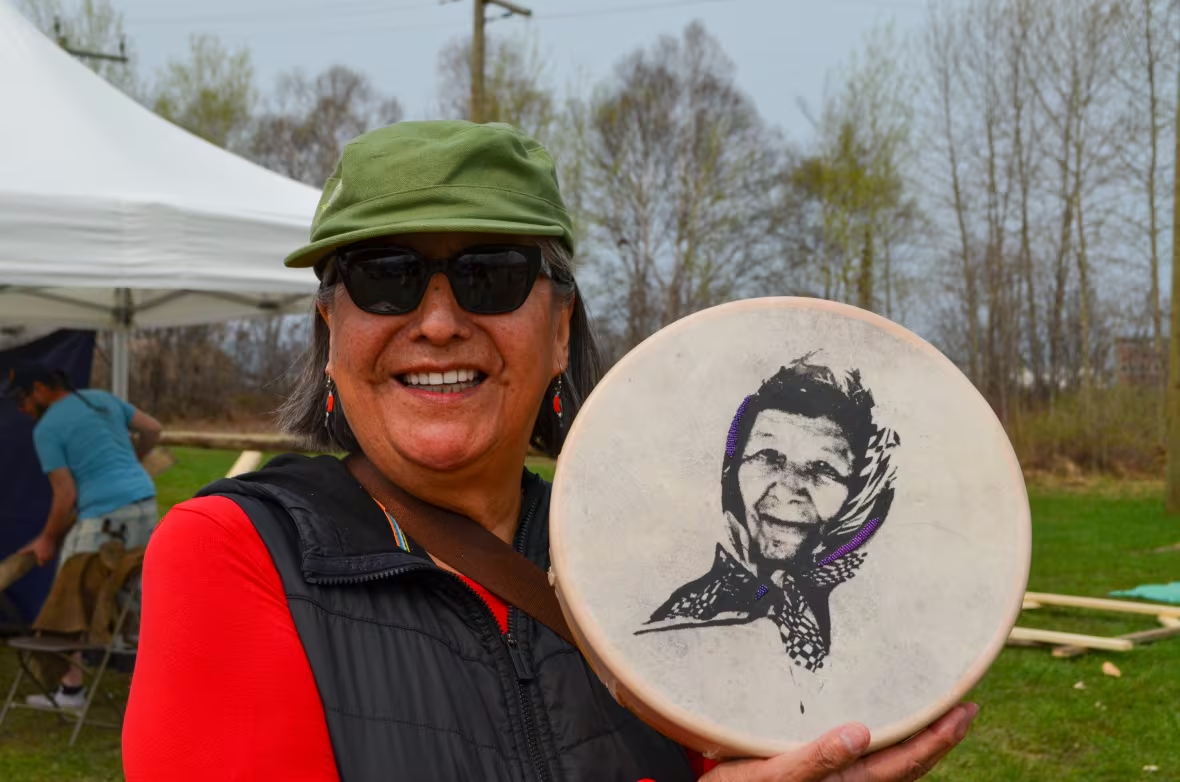How this hide tanning camp brings good medicine to Fort William First Nation
Community gets together to share culture, skills and a chance to reconnect
The smell of smoke drifts through the air from a small fire next to the community teepee. Nearby, young students gather in a circle, their singing guided by the hand drum while everyone else bustles around them with teas and food in hand.
They're prepping moose, beaver and deer hides on the final day of Fort William First Nation's annual hide tanning camp.
For Jean Marshall, this is good medicine.
This is the fourth year of the hide tanning camp in Fort William, an Ojibway First Nation in northwestern Ontario, as the practice has become more present in the community.
Marshall began her journey of learning the cultural tradition as an adult, and now takes pride in assisting individuals of all ages as they do the same.
"With a loss of a lot of our ways due to residential schooling and our collective trauma, this is the kind of work that is helping us," Marshall said.
A safe space to learn
Fort William First Nation held this year's camp in collaboration with Lakehead University. They invited individuals of all skill levels with a desire to learn to enjoy the camp, where teachings and food were also made available.
Each day began at 9 a.m. with a sharing circle and ended at 5 p.m. In that time, participants were a part of the entire process of hide tanning, an experience many had the opportunity to do for the first time.
Brandon Chevrier took part in the entire four days of the camp last week. On the final day, participants worked together to finish cleaning and smoking the hide.
The attendance of elders from the community allowed participants to gain more than just the experience of hide tanning, Chevrier said. The elders shared their vast knowledge of culture and traditions, which quickly became Chevrier's favourite part of his time at the camp.
"For a lot of generations, there was a lot of shame… it's a little different and it's open, and you don't really have to feel ashamed [of] your culture. There's elders everywhere and there's a lot of people who can give you guidance and share stories, and share teachings. It's really nice to see."
Tanning camp open to all
People of all ages enjoyed the camp. Kindergarten students from St. Ann's elementary school in Thunder Bay came as part of the its Fort William First Nation off-campus classroom. The children had hands-on learning opportunities throughout the process.
Kimberly John, a teacher at the Fort William First Nation classroom, said she was happy her students engaged in the experience and enjoyed every minute of it, she said.
"This is a part of their identity, their past, and it's important to have that knowledge of the past to take us forward to the future," John said.
The presence of children left everyone feeling hopeful for the new generation.
"They're surrounded by all of this and they are growing up with it again," Marshall said. "We are really fighting and thriving to bring our ways back."
Moments of reconnection
The camp was a space of reconnection with culture and old friends.
Charlotte Marten participated for her second time, and reunited with a friend she had not seen for over 60 years.
"This kind of event makes me feel whole and that I have come home," said Marten.
The instructors hope to bring moments of reconnection to other neighbouring First Nations in the region. The hide tanning camp can offer healing that comes from participating in land-based activities, Marshall said.
"Hopefully, I'd say [in] less than five years all of the communities will be doing this, so our youth will know how to do this, kids will grow up knowing how to do this," Marshall said.


